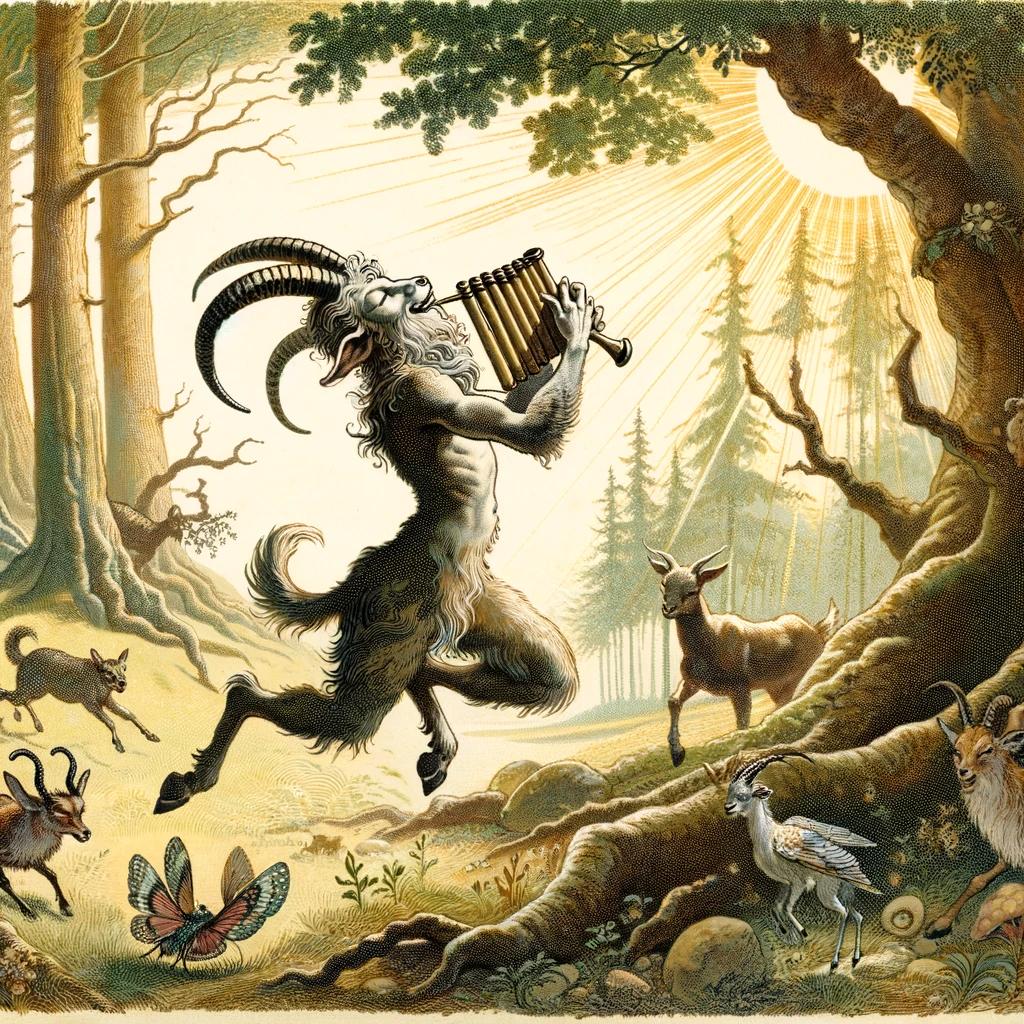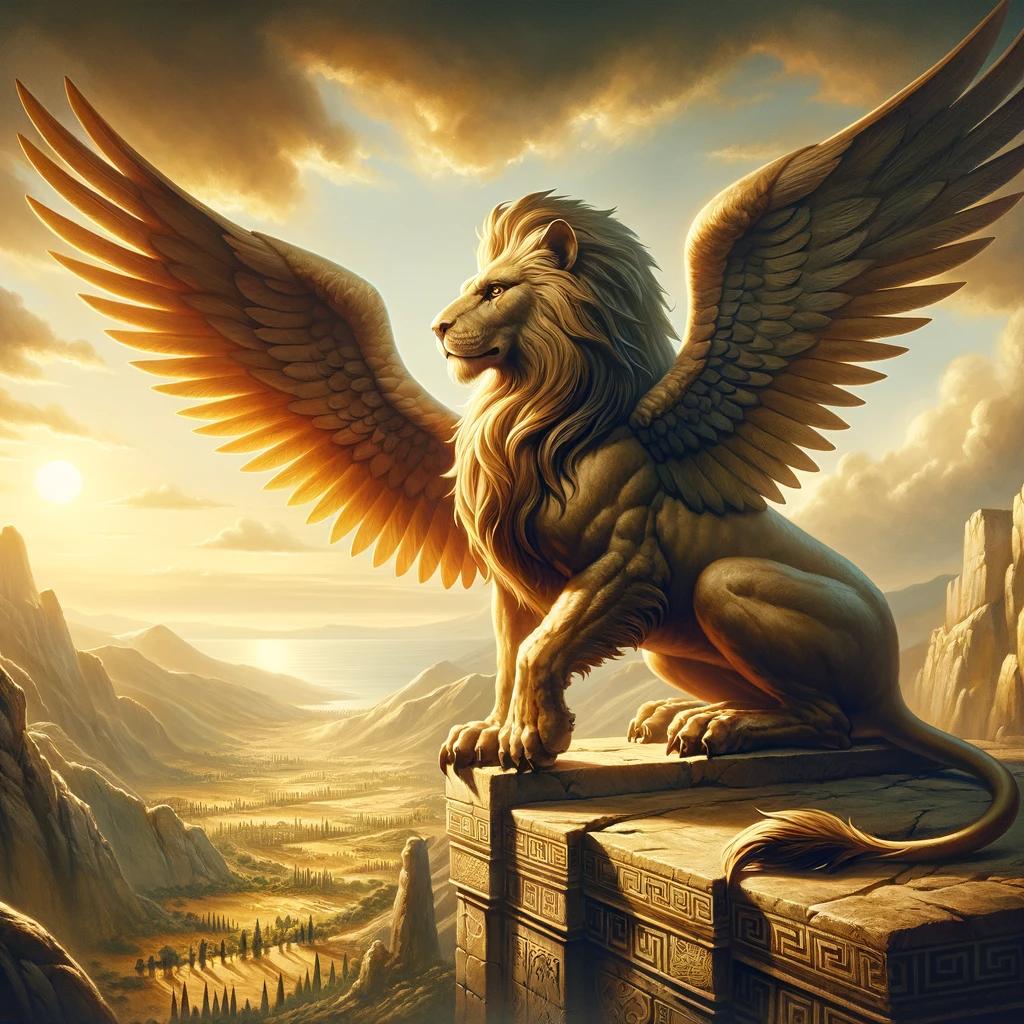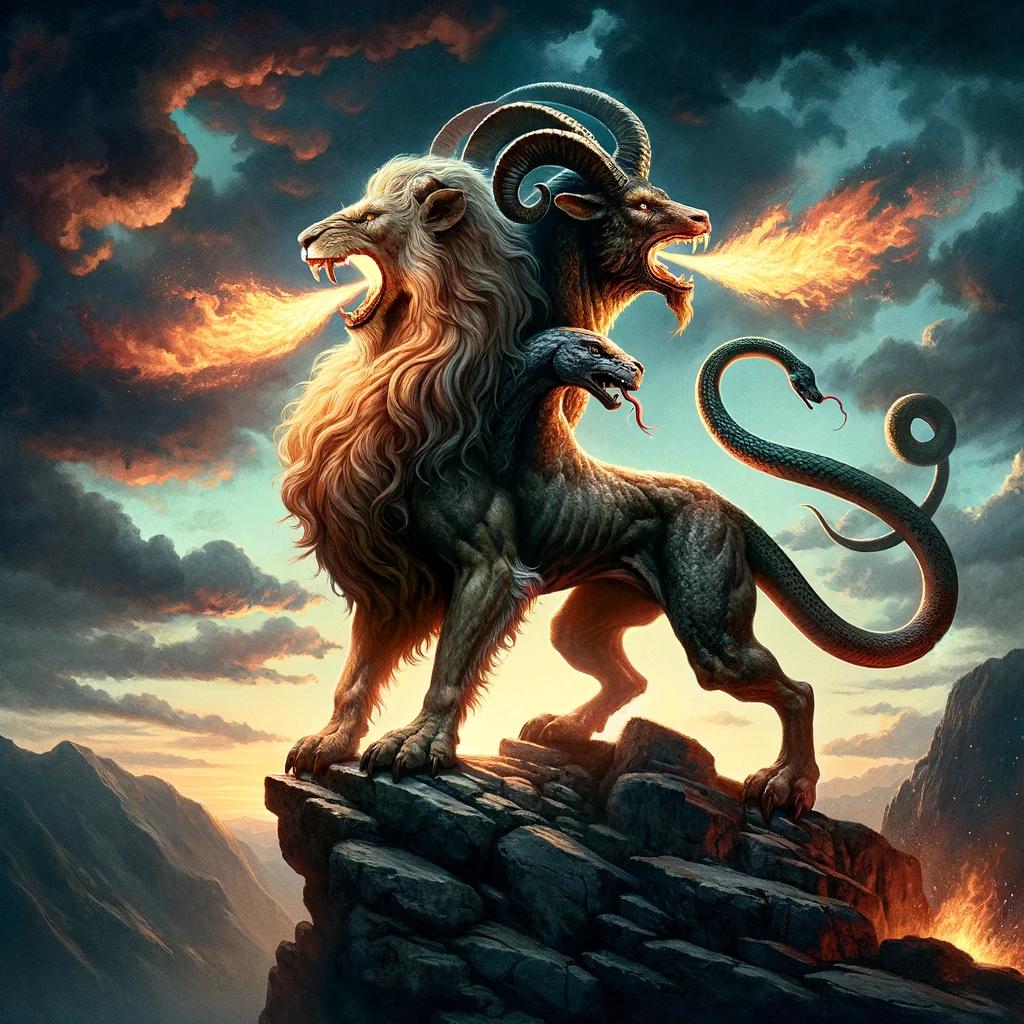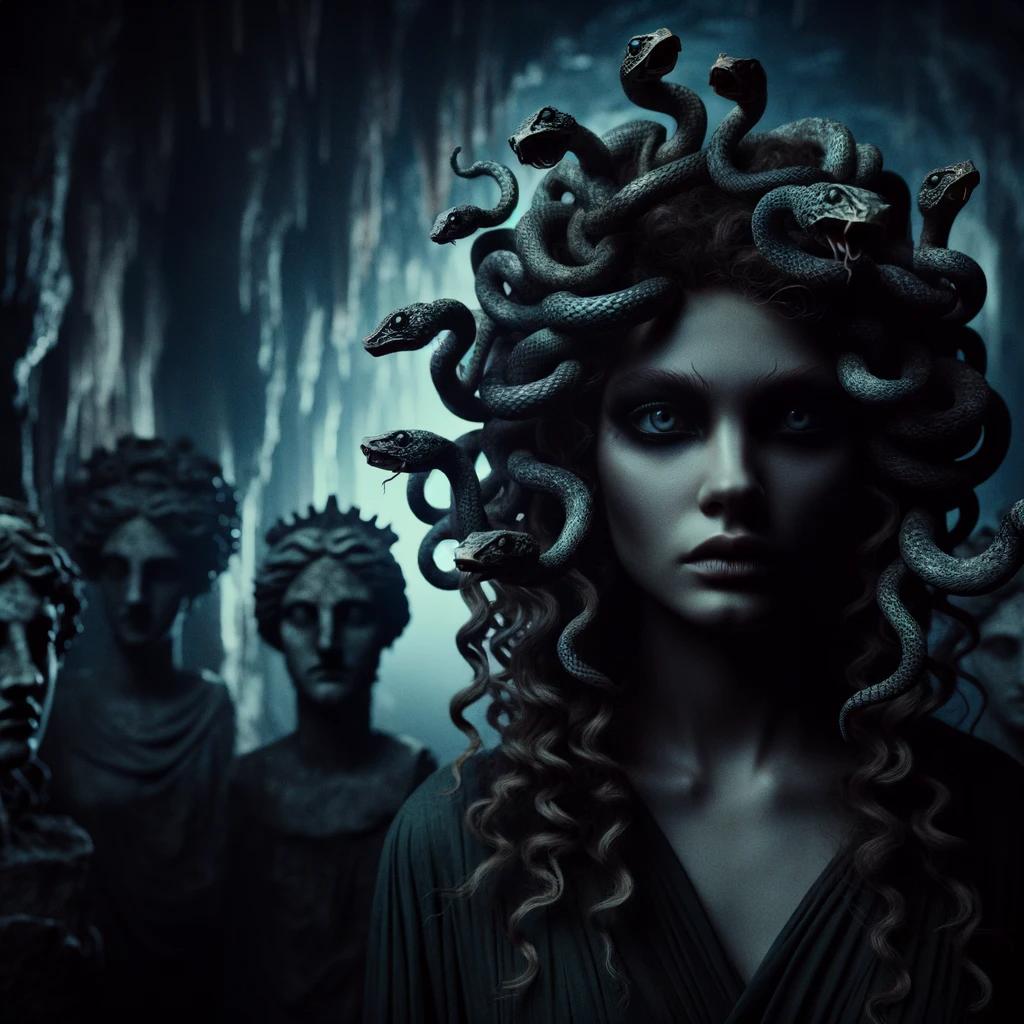Hemera Greek Goddess: Unveiling the Power and Mystery of the Greek Primordial Deity

Hemera Greek Goddess is a significant figure in Greek mythology, representing the primordial deity of the day. Her origins and parentage have different interpretations, sometimes depicted as the daughter of the goddess of the night, Nyx, or the sun god, Helios. Hemera is closely related to her sister, Eos, the goddess of dawn.
This article explores various aspects of Hemera’s role in Greek mythology, her symbolism, worship, and her connections with other deities, shedding light on her enduring legacy in ancient and modern cultures.
Hemera – The Greek Primordial Deity
Explore the captivating realm of Hemera, the Greek primordial deity personifying the essence of day. Uncover the origins and mythological significance of this enigmatic figure, delving into the fascinating tales surrounding her birth and existence.
Discover the profound connection between Hemera and Nyx, the divine sisters representing light and darkness, as we unravel the intricate balance between day and night in Greek mythology.
Witness the enthralling relationship between Hemera and Eos, the goddess of dawn, and marvel at their intertwined roles in heralding the coming of daylight.
Unravel the multifaceted nature of Hemera’s involvement in Greek mythology, exploring her various responsibilities and influence over the mortal world.
Delve into Hemera’s intricate network of relationships and parentage, exploring the different accounts of her divine lineage.
Discover the intriguing theories surrounding her origins, whether as the daughter of the goddess of night, Nyx, or as the offspring of the sun god, Helios. Gain insights into Hemera’s familial connections and her impact on the pantheon of Greek deities.
Exploring the Goddess Hemera
As we delve into the intriguing realm of Hemera, the Greek primordial deity, let us unravel her attributes and symbols that define her essence. Hemera’s significance in ancient Greek myths and epics is profound, as she appears in various tales and plays a vital role in shaping the narrative.
Moreover, Hemera’s influence extends beyond mythology, impacting the everyday life of ancient Greeks in profound ways. Through worship and ritual practices, the devotees sought to honor and connect with this powerful goddess.
Hemera’s Attributes and Symbols
When exploring Hemera’s divine qualities, we find her associated with several attributes and symbols that represent her essence. As the personification of day, Hemera embodies brightness, warmth, and the life-giving power of sunlight.
She is often depicted with radiating golden hair, wearing a flowing diaphanous gown that reflects the brilliance of daylight. Additionally, symbolic representations of Hemera include the solar disc, representing the sun’s presence during the day, and the torch, symbolizing illumination and the dispelling of darkness.
Hemera in Ancient Greek Myths and Epics
Throughout various ancient Greek myths and epics, Hemera makes appearances that contribute to the overall narrative. In these tales, she is often portrayed as a pivotal character involved in the events surrounding the cycle of day and night.
For instance, Hemera’s interactions with other gods and goddesses, such as her sister Eos or her parent Nyx, reveal her role in shaping the natural and divine order. Exploring these myths provides insights into Hemera’s significance and her interconnectedness with other deities.
Hemera’s Influence on Everyday Life in Ancient Greece
In ancient Greece, Hemera’s influence extended beyond the realm of mythology and permeated the everyday lives of the people. As the deity associated with daylight, Hemera’s presence influenced various aspects of daily routines and activities.
From agricultural practices to social customs, the concept of day rooted in Hemera’s essence guided the ancient Greeks in structuring their lives. Understanding her impact on daily life provides a deeper appreciation for the cultural significance of Hemera in ancient Greek society.
Hemera’s Worship and Rituals
Devotion to Hemera was an integral part of ancient Greek religious practices. Worshippers sought to honor and connect with her through various rituals and ceremonies. Temples dedicated to Hemera were sanctuaries where believers gathered to offer prayers, sacrifices, and libations.
Additionally, festivals and celebrations specifically dedicated to Hemera allowed the community to come together and express their gratitude for the blessings of daylight. These worship practices formed a crucial aspect of ancient Greek religious life, demonstrating the enduring importance of Hemera in their spiritual beliefs.
3. Hemera Goddess: Fact vs. Fiction
Debunking Common Misconceptions about Hemera
Despite being a well-known figure in Greek mythology, Hemera has often been subject to various misconceptions. Let’s dispel some of the common myths surrounding this fascinating goddess:
- Hemera is not a lesser-known deity; she holds significant importance as the primordial goddess of the day.
- Contrary to popular belief, Hemera is not the daughter of the sun god Helios but is instead associated with either Nyx, the goddess of the night, or Erebus, representing primordial darkness.
- Hemera is not the mother of Uranus, the sky, as some sources suggest.
Instead, she is closely related to her sister, Eos, the goddess of dawn.
- It is incorrect to assume that Hemera’s significance is limited to Greek mythology; her influence extends further into various aspects of human life and culture.
Hemera’s Portrayal in Art and Literature
Hemera’s depiction in art and literature showcases her prominent role in Greek mythology:
- Artistic representations often depict Hemera as a radiant goddess, emanating light and representing the break of dawn.
- Literary works, such as poems and epic sagas, frequently highlight Hemera’s connection to Eos and the transition from darkness to daylight.
- Stories and myths also emphasize Hemera’s role as the bringer of light and the balance she maintains between night and day.
Variations of Hemera in Different Regions of Greece
Hemera’s character displays regional variations within Greece:
- In some regions, Hemera is celebrated more prominently, particularly in areas where daylight and sunshine hold significant cultural and agricultural importance.
- Local traditions and customs surrounding Hemera may vary, reflecting the unique perspectives and beliefs of different Greek communities.
- Despite these variations, Hemera’s core attributes as the primordial goddess of the day remain consistent throughout different regions.
Hemera’s Legacy and Continued Importance in Modern Culture
Hemera’s influence continues to be felt in contemporary culture and society:
- Her significance as the personification of daylight resonates in various artistic mediums, including literature, paintings, and performances.
- Hemera’s symbolism is often employed to represent concepts such as rejuvenation, new beginnings, and the triumph of light over darkness.
- Her legacy is also evident in popular culture, where references to Hemera can be found in modern literature, films, and even in the naming of celestial bodies.
- As we navigate the complexities of modern life, Hemera’s enduring presence serves as a reminder of the power of light, hope, and the cyclical nature of time.
Understanding the Hemera-Nyx Relationship
The Hemera-Nyx relationship holds tremendous mythological significance in Greek cosmology.
It explores the dynamic interplay between light and darkness, symbolizing the eternal cycle of day and night. Let us delve deeper into this profound connection and unravel its symbolism and influence on natural phenomena.
The Dynamic of Light and Darkness
At the core of the Hemera-Nyx relationship lies the contrast between light and darkness. Hemera personifies the radiant light of daytime, representing illumination, vitality, and productivity. On the other hand, Nyx symbolizes the enigmatic darkness of nighttime, embodying mystery, introspection, and rest.
Hemera and Nyx in Greek Cosmology
Within the Greek cosmological framework, Hemera and Nyx play pivotal roles in the perpetual cycle of creation and dissolution. Hemera’s emergence heralds the dawn, initiating the rise of light and the start of a new day.
Conversely, Nyx takes over when daylight fades, immersing the world in darkness and enabling introspection and dreams.
The Symbolism behind Hemera and Nyx’s Interaction
The interaction between Hemera and Nyx represents the inseparable union of opposites. Their eternal dance showcases the delicate balance between light and darkness, day and night, activity and rest.
Their harmonious coexistence highlights the cyclical nature of existence and the constant interplay between opposing forces.
Hemera and Nyx’s Influence on Natural Phenomena
The influence of Hemera and Nyx extends beyond symbolism and mythology to the natural world. Hemera’s presence brings forth sunlight, warmth, and growth, shaping the patterns of life on Earth.
Nyx’s embrace, meanwhile, introduces coolness, calmness, and the nourishing essence of the mysterious night, influencing the natural rhythms and cycles of the world.
Hemera Greek Goddess in Historical Context
Exploring the historical context surrounding Hemera, the Greek primordial deity, provides valuable insights into her significance within ancient Greek culture. This section delves into various aspects of Hemera’s presence in historical texts, philosophical thought, poetry, and ancient writings.
Hemera’s Presence in Hesiod’s Theogony
Hemera’s presence in Hesiod’s Theogony, a fundamental text in Greek mythology, solidifies her importance in the pantheon of Greek deities. Hesiod describes Hemera as the daughter of Nyx (the goddess of the night) and Erebus (representing primordial darkness), further emphasizing her role as the personification of daylight.
Hemera in Ancient Greek Philosophical Thought
The influence of Hemera extended beyond mythology and permeated ancient Greek philosophical thought. Philosophers contemplated the interplay between light and darkness, using Hemera as a symbol of illumination and the contrast between day and night.
Hemera’s presence in philosophical discussions enriched their exploration of metaphysics and the nature of existence.
Hemera’s Relevance in Greek Lyric Poetry
Greek lyric poetry celebrated the beauty and transformative power of Hemera. Poets praised the dawn and the arrival of daylight, often personifying Hemera as a vibrant goddess who brought hope, renewal, and opportunities for new beginnings.
Their verses emphasized the importance of Hemera’s role in the cyclical nature of life.
Hemera in the Writings of Pausanias and Other Ancient Authors
The writings of Pausanias, a Greek traveler and geographer, along with other ancient authors, provide further insights into Hemera’s cultural significance. Their accounts shed light on the rituals, festivals, and worship associated with Hemera in various regions of ancient Greece.
These writings also highlight the enduring impact of Hemera’s divine presence in temples, sanctuaries, and religious practices.
Hemera Pronunciation and Linguistic Analysis
When exploring the world of Greek mythology, it is essential to have a comprehensive understanding of the proper pronunciation and linguistic analysis of the deity Hemera. This section delves into various aspects related to her name, etymology, and translations in both ancient and modern languages.
The Proper Pronunciation of Hemera
Pronouncing Hemera correctly is key to appreciating the significance of this Greek primordial goddess. The recommended pronunciation in American English is “hee-MEER-uh,” with the emphasis on the second syllable. To properly honor Hemera, it is important to articulate each syllable distinctly and maintain the proper stress.
Hemera’s Etymology and Linguistic Roots
Examining the etymology of Hemera unveils intriguing insights into the linguistic roots of her name. Derived from the Ancient Greek word “ἡμέρα” (hemera), which literally translates to “day,” her name encapsulates her role as the personification of daytime.
This etymological connection showcases the profound association between her name and her divine essence.
Hemera’s Name in Other Ancient Greek Texts
Throughout ancient Greek literature, Hemera is referenced by her name in different texts and writings. In the Homeric Hymn to Aphrodite, she is mentioned as “Hēmērā,” amplifying her connection to the concepts of light and day.
Her name also appears in the philosophical works of Plato and Aristotle, affirming her presence and significance in their discourse.
Variations and Translations of Hemera in Modern Languages
In modern languages, variations and translations of Hemera’s name have been adopted to suit local linguistic conventions. For instance, in Spanish, her name is often translated as “Hemera, diosa del día.”
Similarly, in French, it is rendered as “Héméra, déesse du jour.” These adaptations demonstrate the universality of Hemera’s influence and her continued recognition across different cultures worldwide.
Hemera’s Divine Family Tree
Hemera, the Greek primordial deity of the day, has a complex and intriguing divine family tree.
This section explores Hemera’s parentage, siblings, offspring, extended family, and connections to other Greek deities.
Hemera’s Parentage and Siblings
Hemera is often described as the daughter of Nyx, the goddess of the night. However, there are other accounts that suggest different parentage. Regardless, Hemera shares a close kinship with her sister, Eos, the goddess of dawn.
Together, they form a powerful trio representing the fundamental aspects of day and its dawning.
Hemera’s Offspring and Extended Family
While Hemera’s direct offspring are not extensively mentioned in mythology, she is believed to have played a vital role in the lineage of gods and goddesses. Through her connections with other deities, Hemera is part of an intricate web of divine relationships that shape Greek mythology and cosmology.
Hemera’s Connections to Other Greek Deities
Hemera’s divine family tree extends beyond her immediate relations, connecting her to various other Greek deities. Some notable connections include her ties to Nyx, her mother, and other primordial deities such as Gaia and Uranus. These relationships emphasize Hemera’s significance within the larger pantheon and cosmological framework of Greek mythology.
Unveiling Hemera’s Symbolism
Unveiling Hemera’s symbolism allows us to delve into the deeper meanings associated with this Greek primordial deity. She is not merely a personification of the day; she represents the essence of light, illumination, and vitality.
Exploring the different aspects of Hemera’s symbolism reveals the intricate layers of her significance in Greek mythology.
Hemera as the Personification of Day
Hemera’s role as the personification of day embodies the concept of time and the cycle of life. She symbolizes the awakening of the world each morning, the transition from darkness to light, and the renewal that comes with each new day.
Hemera’s representation as the embodiment of daytime reinforces the belief in the constant renewal and transformative power of light.
Day and Night in Greek Mythology
In Greek mythology, day and night are often portrayed as opposing forces, with Hemera representing the bright, active, and conscious aspects of existence, while night epitomizes darkness, rest, and the unconsciousness of sleep.
The contrast between day and night underscores the balance and duality of the natural world. Hemera’s symbolism sheds light on this eternal interplay between light and darkness.
Hemera’s Symbolic Representations in Art and Literature
Hemera’s symbolic representations in art and literature provide insights into the ways ancient Greeks perceived and revered her.
In artistic portrayals, Hemera is often depicted as a radiant goddess, adorned with bright colors and surrounded by beams of light. This visual symbolism emphasizes her role as the bringer of light and illuminator of the world.
In literature, Hemera’s presence signifies the rising sun, the emergence of a new day, and the potential for growth and transformation.
- Hemera’s radiant aura, emanating light and warmth
- Her association with the sun, often depicted with a sun disk or golden crown
- The presence of dawn and sunrise motifs in artwork
- Her connection to celestial bodies and the heavens
Through these various symbolic representations, Hemera’s significance as the personification of day becomes even more apparent.
Her imagery conveys the transformative power of light and its impact on both the physical and spiritual realms.
Hemera’s Role in the Greek Pantheon
As a deity in the Greek pantheon, Hemera occupies a unique position among the Olympian gods. While not considered one of the twelve major gods and goddesses, Hemera holds a significant role as the primordial goddess of the day.
Hemera’s Position Among the Olympian Gods
Although not a member of the twelve Olympians, Hemera is closely associated with them and often interacts with these prominent deities in Greek mythology. While the Olympians are known for their divine domains and influence over various aspects of life, Hemera’s role as the personification of day places her in a position of connection and interaction with the greater pantheon.
Hemera’s Duties and Responsibilities
As the goddess of day, Hemera is responsible for initiating and overseeing the daily transition from night to day. Her role is vital in maintaining the cyclical nature of the cosmos, ensuring the balance between light and darkness.
Hemera’s duties include guiding the sun across the sky and bringing illumination and vitality to the world, enabling life to flourish during daylight hours.
Hemera’s Interactions with Other Gods and Goddesses
Hemera’s interactions with other gods and goddesses are primarily centered around her role in the cosmic order.
She collaborates with her sister, Nyx, the goddess of night, in a perpetual dance between light and darkness. Hemera’s connection with other deities, such as Helios and Eos, further solidifies her position as a vital force in the celestial realm and highlights her intricate relationships within the pantheon.
Hemera’s dynamic presence enriches the Greek pantheon, contributing to the intricate tapestry of divine power and mythology, while playing a vital role in maintaining the cosmic balance.
10. The Influence of Hemera in Greek Cosmology
The influence of Hemera, the Greek primordial goddess of the day, extends beyond mere symbolism.
Hemera’s role is deeply intertwined with the creation myth, the elements of earth, sky, and sun, and the cycle of day and night.
Hemera’s Role in the Creation Myth
Hemera plays a crucial part in the Greek creation myth. As the personification of day, Hemera brings light and life to the world, representing the transition from darkness to brightness. Hemera’s presence marks the beginning of creation, accompanied by the emergence of other primordial deities.
Hemera’s Connection to Earth, Sky, and the Sun
Hemera’s realm bridges the earthly and celestial domains, connecting the material world with the heavens above. She symbolizes the dawn of a new day, welcoming the sun’s rise and illuminating the earth with warmth and vitality.
Hemera’s influence extends beyond the physical elements, representing the interconnectedness of nature and cosmic forces.
Hemera’s Impact on the Cycle of Day and Night
Hemera’s presence in Greek cosmology is integral to the perpetual cycle of day and night. As the goddess of day, she heralds the dawn and sets the stage for the activities of mortals.
Hemera’s departure marks the transition to night, allowing for rest and rejuvenation before the cycle begins anew. Her continuous influence reinforces the cyclical nature of time and the importance of balance between light and darkness.
Hemera: A Primordial Goddess in Greek Mythology
Hemera, the Greek Primordial Deity, holds a significant place in the rich tapestry of Greek mythology. This section delves into her primordial nature and attributes, shedding light on her unique role in the divine pantheon.
Being a primordial goddess, Hemera embodies the essence of day, heralding the dawn and ushering in the light. Her presence and significance in ancient Greek theogony further establish her importance among the gods and goddesses of antiquity.
Let us explore the captivating world of Hemera, the primordial goddess whose radiance illuminates the realm of mythology.
Hemera’s Primordial Nature and Attributes
Hemera’s primordial nature stems from her personification of the day itself. As the embodiment of daylight, she represents the life-giving force that brings warmth, illumination, and vitality to all living beings.
Her attributes include radiant beauty, grace, and a gentle yet powerful presence. Hemera’s association with the diurnal cycle is symbolized by her radiant aura and her ability to dispel darkness, making way for the sun’s glorious ascent.
Hemera’s Status in Ancient Greek Theogony
In the ancient Greek theogony, Hemera is revered as one of the primal deities who emerged at the dawn of creation. As the daughter of Nyx, the goddess of night, Hemera’s lineage connects her to the very origins of the cosmos.
She occupies a significant place in the divine hierarchy, alongside titans, gods, and goddesses, playing an integral role in shaping the world as we know it.
Hemera’s Significance in the Pantheon of Greek Deities
Hemera’s presence in the pantheon of Greek deities holds immense significance, both in mythological narratives and in the religious practices of ancient Greece.
As the bringer of light and the personification of day, she assumes a pivotal role in the cyclical balance of the cosmos. Hemera’s association with other prominent deities underscores her importance in the divine tapestry, establishing her as a revered figure in Greek mythology.
Join us as we delve into the captivating mythology and timeless significance of Hemera, the primordial goddess who illuminates the world with her ethereal presence and symbolizes the limitless potential of daylight.
The Eternal Light: Hemera’s Legacy
Hemera’s influence on Greek religion and spirituality was profound and enduring. As the primordial goddess of day, she was revered as a beacon of light and a symbol of hope.
Her presence illuminated sacred rites and rituals, infusing them with her divine energy. Worshipers sought her blessings for a prosperous and joyful life.
Hemera’s Influence on Greek Religion and Spirituality
Within Greek religion, Hemera held a significant place in the pantheon of gods.
She was venerated in temples and revered in various religious ceremonies. Her association with light and day made her a central figure in prayers for abundance, fertility, and protection. Devotees sought her guidance in times of darkness, seeking her divine intervention to bring clarity and enlightenment.
Hemera’s Symbolic Meaning in Ancient Greek Society
Hemera’s symbolic meaning in ancient Greek society encompassed notions of birth, renewal, and the cyclical nature of life. Her presence signified the promise of a new day and the opportunity for growth and transformation.
She represented the eternal light that dispels darkness and ushers in the dawn of a new beginning.
Hemera’s Enduring Presence in Modern Greek Culture
Hemera’s legacy remains alive in modern Greek culture. Her symbolism is deeply ingrained in everyday life, art, and literature. Her representation can be found in architectural designs, jewelry, and various forms of artistic expression.
Additionally, Hemera’s mythical significance continues to inspire contemporary interpretations and adaptations, ensuring her enduring presence in the cultural tapestry of Greece.
Hemera Greek Goddess: Myth vs. Reality
Exploring the myths and legends surrounding Hemera Greek Goddess offers a chance to separate fact from fiction. In this section, we delve into the various aspects of Hemera’s existence and her portrayal in popular culture, as well as her role in contemporary mythological studies.
Separating Facts from Fiction about Hemera
To truly understand Hemera Greek Goddess, it is important to distinguish between the myths and realities that surround her. This subsection examines the available information and historical accounts, dispelling common misconceptions and shedding light on the truth behind her divine nature and significance.
Hemera’s Representation in Popular Culture
Hemera’s influence extends beyond ancient mythology into modern popular culture. This section explores how Hemera Greek Goddess is portrayed in literature, art, film, and other media forms. We delve into the ways she is depicted and the impact she has on contemporary storytelling, showcasing her enduring role in captivating audiences throughout the ages.
Hemera’s Role in Contemporary Mythological Studies
The study of mythology continues to evolve, and contemporary mythological studies include an examination of Hemera’s significance within the broader pantheon of Greek deities. This part explores the ongoing research, theories, and interpretations surrounding Hemera, shedding light on her role in shaping our understanding of ancient mythology and its relevance in today’s world.
Hemera and the Greek Creation Myth
In the realm of Greek mythology, Hemera’s involvement in the birth of the universe holds significant importance. Through various narratives and interpretations, her role in the creation narrative sheds light on the origins of the cosmos and its interconnectedness.
This section explores Hemera’s essential involvement in the Greek creation myth.
Hemera’s Involvement in the Birth of the Universe
According to ancient Greek mythology, Hemera played a vital role in the primordial creation of the universe. It is believed that Hemera emerged from the void to bring forth light and initiate the cycle of day.
As the personification of day, she was responsible for illuminating the world and paving the way for life to flourish.
Interpreting Hemera’s Place in the Creation Narrative
The interpretation of Hemera’s place in the Greek creation narrative varies among scholars and ancient texts. Some view her as a divine force that symbolizes the transition from darkness to light, representing the duality inherent in the natural world.
Others see Hemera as an integral component in the cosmic order, ensuring the balance between day and night.
Hemera’s Connection to Gaia, Uranus, and Other Primordial Deities
- Gaia: Hemera shares a connection with Gaia, the primordial goddess of the Earth. As the personification of day, Hemera’s presence complements Gaia’s role in sustaining life on Earth.
- Uranus: Hemera’s connection to Uranus, the primordial god of the sky, showcases her influence on the celestial realm.
Together, they uphold the harmony between the Earth and the sky.
- Other Primordial Deities: Hemera’s role in the Greek creation myth is closely intertwined with other primordial deities like Nyx (goddess of the night) and Erebus (personification of darkness).
Their collective presence establishes the foundation upon which the Greek pantheon and the natural world are built.
This section delves into Hemera’s integral involvement in the Greek creation myth, unraveling her connection to the birth of the universe, interpreting her significance, and exploring her relationships with other primordial deities.
Exploring Hemera’s Mythological Realm
Embark on a journey through Hemera’s captivating mythological realm, delving into her various domains and influences on ancient Greek culture.
Hemera’s Domain Over Daytime Activities
Hemera’s presence extends beyond the mere concept of daylight, encompassing a wide array of activities and aspects of daily life. Within her domain, Hemera governs:
- Social interactions and gatherings during the day
- Work, productivity, and occupations associated with daylight hours
- Sports, outdoor activities, and festivals conducted in daylight
- Perception of time and its progression throughout the day
Hemera’s Connection to Natural Elements and Phenomena
Hemera’s role in Greek mythology stretches beyond her dominion over daytime activities. She shares a profound connection with various natural elements and phenomena, including:
- The sun and its celestial journey across the sky
- The appearance and disappearance of shadows
- The changing hues of the sky during sunrise and sunset
- The growth and blossoming of plants under her nurturing warmth
Hemera’s Influence on Human Life and Mortality
Hemera’s influence extends even further to the realm of human existence, shaping mortality and imparting her influence on aspects of life such as:
- The importance of balance between day and night in maintaining a harmonious life
- The concept of the ephemeral nature of life
- The symbolism of new beginnings and opportunities with the dawn of each day
- The cyclical nature of time and the reminder of our mortal existence
Immerse yourself in Hemera’s intriguing domain, exploring the interconnectedness between her role as the deity of the day, her influence on natural phenomena, and her impact on human understanding of life and mortality.
Through this exploration, gain a deeper appreciation for the all-encompassing significance of this enigmatic Greek goddess.
.




















